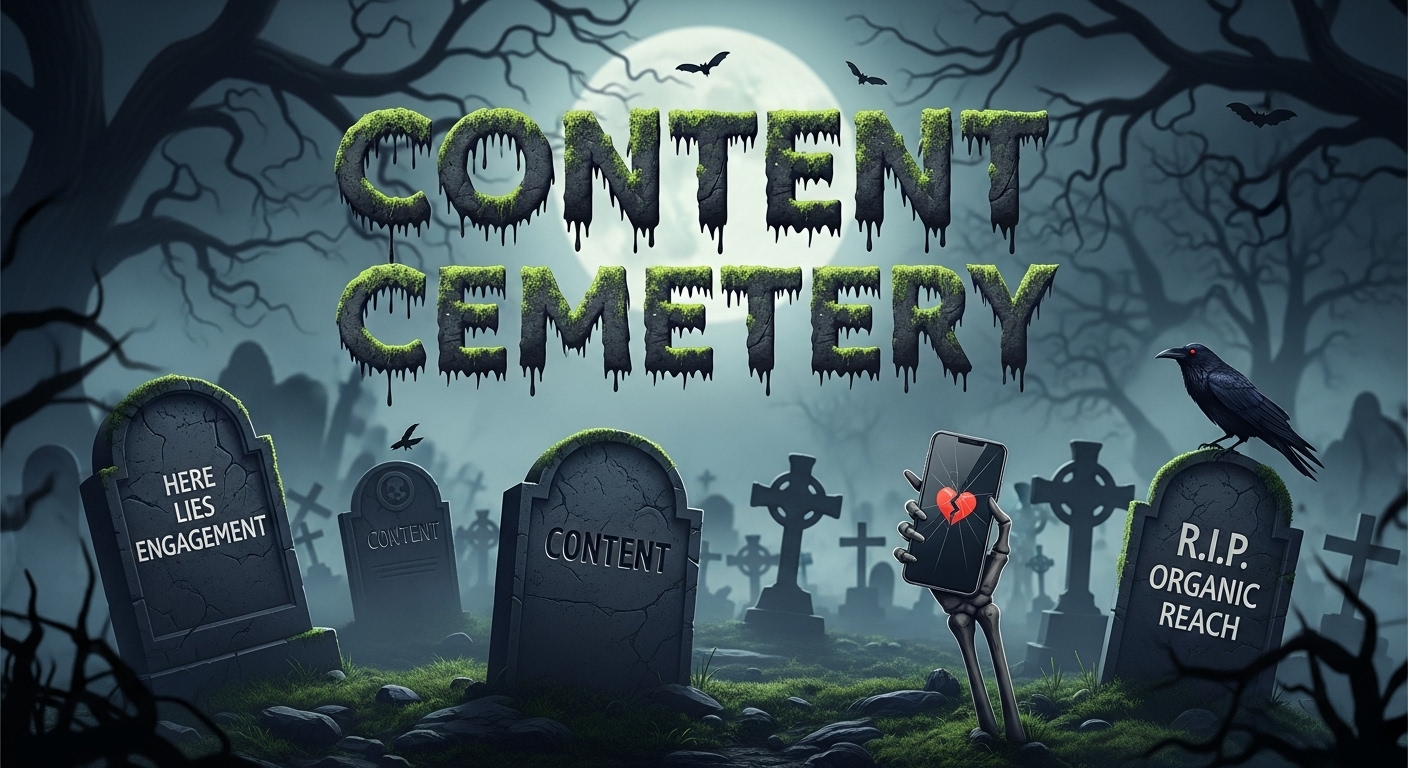
So-called "Vanity Metrics" Deserve a Second Look

Vanity metrics
Somewhere down the line, certain metrics gained a negative connotation as fluff metrics that don’t correlate to business outcomes. To cut to the chase: If you didn’t already deduce from this article’s title, we don’t care for the term or the perception. Let’s dive into what they are, why they have a bad rap, and what's the best lens for these much maligned metrics.
What are vanity metrics?
As defined by the Content Marketing Institute, vanity metrics include impressions, bounce rate, likes, shares, comments, followers, open rates, views, traffic and time on site.
We disagree.
These metrics aren’t inherently “bad” — in fact, all metrics can be when measured alone. Rather, they’re a small part of a larger story and need to be layered with other data to better understand content marketing performance.
So how can we better understand how to properly leverage data to find the right insights?
Using the right metrics
As marketers, it is our responsibility to figure out the right ways to measure our activities so that we can get actionable insights. Data is always valuable — many teams simply don’t know how to make that data actionable.
If you aren’t getting what you need from the metrics that you are currently using, rethink what you are trying to achieve.
Connecting to business outcomes
As marketers, we need to understand that our work should be directly aligned with business outcomes. That is, is our content helping build audience? Shorten sales cycles? Drive demand?
These business outcomes should translate easily into objectives and each objective should have a primary KPI as well as secondary KPIs, which will allow you to look at your data from multiple perspectives.
Let’s look at an example: Even as a standalone metric, pageviews can tell you from a very basic perspective what is your most popular and least popular content. It’s a necessary data point.
When you start to layer in other metrics, such as channel or conversions, you can then see how effective this page or piece of content is based on other elements, which then adds more value to pageviews, e.g. Is this piece of content most valuable when used via email or from organic search? Which channel drives the most conversions for this piece of content?
All metrics can tell us a story, it just depends on the story that we are trying to tell.
Metrics marketers should be using
As growth, demand, or content marketers, we should be challenging ourselves to have a strategy to not just accept the metrics provided to us by Google or Adobe Analytics or even the metrics that management is asking for.
Instead, proactively seek metrics that give us the data to optimize our campaigns or efforts in order to improve the customer experience. If management is only asking for views or leads, provide them what they are asking for but also look for opportunities to show your value to the organization.
What do some of these metrics look like?
Customer journey insights
Some of the most difficult, yet most important, data to pin down are insights around the customer journey. As marketers, we need to know more than what is the last touchpoint before a form submission — What works best at the top of the funnel? What’s accelerating conversions or high-value actions in the middle of the customer journey?
Your audience is always going to react differently to your content. Make it your goal to understand how all of your content performs at each stage of the journey and what is ultimately driving the high value actions or conversions that your team is measured against.
Metrics to guide your way
- Views: As always, you’ll want to use views to establish a baseline.
- Conversion: Do you have a multi-touch data model or are you only measuring first touch or lead conversion? (And if you do have a multi-touch model, make sure you understand what’s happening in the middle of the audience journey.)
- Channel: Test and learn what channels work best for each piece of content across your customer journey.
Channel referrer
Content distribution is the name of the game. Yes, we all want our websites and content to be organic traffic machines, but for most of us, that’s not reality. In fact, some of your most valuable conversion or engagement activity could be coming from social or email.
Make sure you understand what your channel referral landscape looks like. Where are you strongest? Where do you need to improve?
Measuring channel referrer against other metrics will allow you to not only build a more personalized customer journey for your audience by serving them the right content on the right channels but also double down on investing your budget in the right areas and cut down on waste.
Metrics to guide your way
- Views: I promise; I’m not trying to prove a point, but this metric should never leave your arsenal. It will always allow you to better partition your data as a first step.
- Scroll depth: Make sure someone isn’t just clicking on your content and bouncing. If you are not getting the intended scroll depth, look for strategies to improve performance.
- Conversions: This (or a high value action) will always be the intended action you want someone to take through your content. This could be: Clicking a link to learn more or driving to a demo request or ultimately making a purchase. Remember that you don’t want to have too many conversion opportunities on one page (this is not only confusing to the audience but also muddies your data) and that the content that you are serving by channel is accomplishing the primary goal that you intended it to.
- Duration: Learn more about this important metric below.
Duration
Is your audience engaging with your content? Views don’t mean much if your audience isn’t spending the time to read your content.
Recommended content length is a good plug-in to use with your content to help inform your users how long your content will take to read. It will also give you a good baseline to see whether your content is driving effective engagement or not.
Metrics to guide your way
- Views: If the content isn’t getting enough traffic, look for ways to optimize performance or remove the content entirely (making sure it isn’t first a key middle touchpoint in the audience journey). If the content is getting plenty of traffic, combine it with other metrics to ensure you’re driving at your goal and not just driving traffic.
- Channels: Layering duration with channel metrics should show you where you should focus your distribution efforts. Market smarter and keep your ecosystem as clean as possible.
- Scroll depth, heat maps, and click maps: Consumption is great, but engagement is better. Measuring duration along with metrics such as these help to ensure your consumer is going below the fold. Be careful, though — some software just tracks time on a page, which could really just be someone leaving a page open in the background of their browser.
Content sentiment (vs. brand sentiment)
You might already be measuring brand sentiment, but it can only tell you so much. Take your brand sentiment strategy one level deeper and layer in content sentiment. What this means is within your sentiment strategy, you should also understand what your audience thinks about the content that you are using to convert your audience.
Do they like your content? Does it positively or negatively impact your brand? Does it provide enough information to help drive a conversion? Use these questions to help guide your strategy and the following metrics to pull out more insights.
Metrics to guide your way
- Views: Serve your content sentiment surveys on your most active content in order to get the highest engagement.
- Channels: Better understand what channels drive engagement — this will help you find which pathways to double down on content sentiment efforts.
- Scroll depth: No matter what, you don’t want to disrupt your customer’s experience in the pursuit of content sentiment. Offer surveys when there is no longer any engagement with the content you want to serve and where you’re going to get the right engagement.
Conversion Touchpoints
Every piece of content or sub page will likely have an element that your audience can engage with, whether it’s a backlink adding context to an article or a link to a product in your online store. You always want a way to measure these actions.
As your content or web ecosystem expands, you will want to understand where your audience is clicking and why. What is driving your audience to take those actions? What conversion actions are they completing?
If you can better understand how your audience interacts with clickable elements along their customer journey, you will be able to better optimize their experience.
Metrics to guide your way
- Views: Start with your most trafficked pages and work backwards from there. But don’t just focus on the highest trafficked pages. You’ll also want to look at highest converting pages vs. views to better understand what type of experience or content will drive the highest opportunity at a conversion.
- Channels: When you understand what channels work best to drive conversions, you can then try to replicate those elements across other parts of your website to see if you find the same success.
- Location in the customer journey: Make sure your content is properly tagged with its position (top, middle, or bottom) in the funnel. Then use this to measure against conversions as well as the above metrics to see if this piece of content is working within its intended journey or if you need to make adjustments to the tag or the content.
Maximize your data
Our job as marketers is not an easy one. In fact, it seems to get harder every year as Google shifts algorithms and privacy laws make information gathering on the audience even more difficult.
It’s our job to tell the best stories possible, whether it’s a product story, a customer story, or a brand story. So instead of putting certain metrics into a “vanity metrics” bucket, look at every metric as an opportunity to unlock more of your company’s story that you have yet to tell. Remember: Data is our biggest asset and should always be our best friend.
If you have questions about measuring success within your customer journey or using content intelligence to become a better storyteller, reach out.
Become a thought leader
Become a thought leader
Trusted by the largest (and now smartest) brands in the world.
“Before Knotch we did not understand what content was driving business results. Now we understand which content moves the needle. Knotch’s cohesive reporting and insights paint a real picture of what’s happening on our website instead of the patchwork quilt that comes from a Google Analytics approach. With Knotch we have been able to re-prioritize ad spend, route better leads to our SDR team, and inform our content development initiatives.”

"The Knotch platform ensures that we deliver high-performing content tailored to young home shoppers, enhancing their experience and driving better business outcomes.”

"Our partnership with Knotch has been highly successful, empowering us to leverage data-driven insights and refine our content strategy.”









